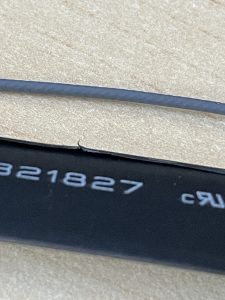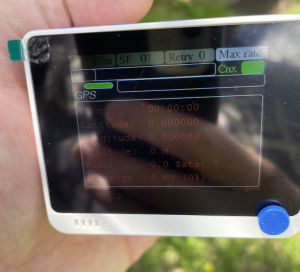Before we start, there are a few things you need to know:
- First up, my huge thanks to Nathan (@plainsimple) for the loan of his very expensive RigExpert AA-1000 Antenna Analyser to run these tests. Also for his advice and knowledge. Ian, too.
- Secondly, I have a huge caveat around my interpretation of this data. I am not an RF engineer, nor do I play one in the movies. I’ll present some information here and will get things wrong, I’m sure. As always, please add a comment and I’ll be happy to learn where I’m wrong and will fix things up!
- Thirdly, these were the only antennas I had access to. If I get a hold of more antennas we’ll try and add more to this list.
- Fourthly (sp.?), I had some new fancy antennas arriving from McGills and wanted to see what all the fuss is about. I tested the first couple in the delivery that I laid my hands on.
- Lastly, consider this as more of a ‘Pepsi challenge’ than a scientific test…
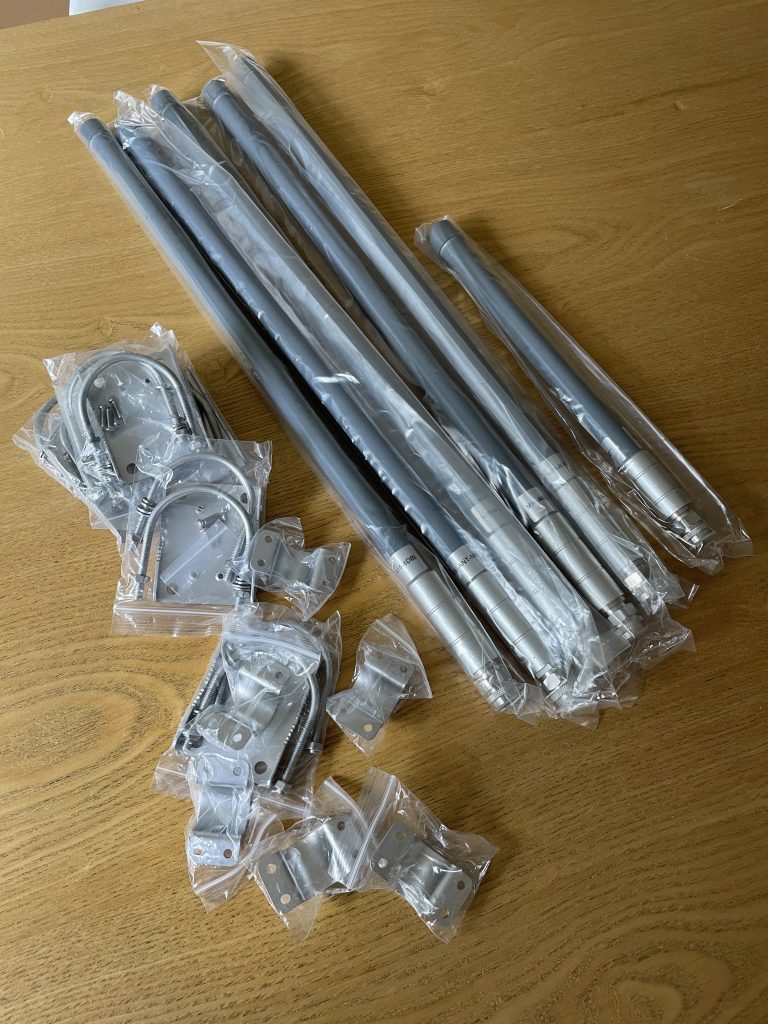
The Problem
Most of us who involved in Helium are likely coming for the investment opportunity and have little experience in some of the networking aspects, let alone the radio (RF) side of things. We’re all buying antennas and cables and are hoping for the best. Pretty much expecting them to do what they say on the tin. But what exactly ARE we buying and just how WELL-TUNED are the antennas we use? Let’s try and find out.
Not all antennas are created equal!
Here’s some testing on the usual suspects to see how they stack up. I’ll test the stock antennas I have access to as well as some of the external ones I’ve got too. I’ll post up the results so you can make a more informed decision.
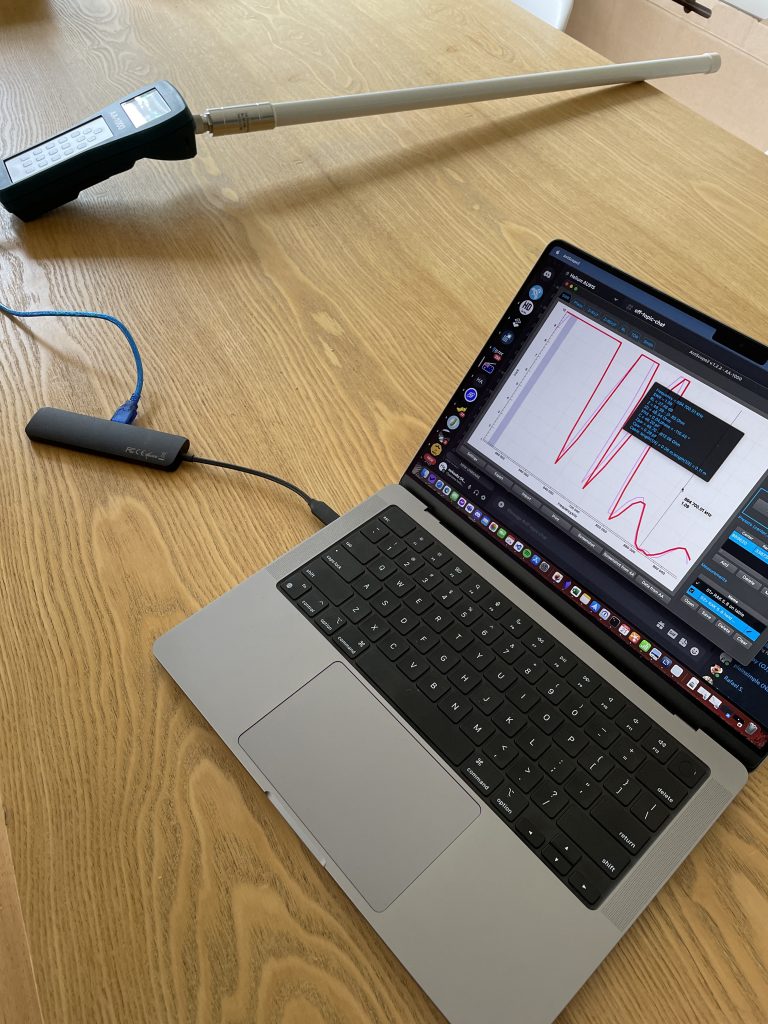
Here’s what I tested:
- The stock Sensecap M1 antenna
- The Heltec stock antenna
- Some cheap white antennas that look like the stock Sensecap M1 ones
- RAK 5.8dBii
- McGills 3dBi
- McGills 6dBi
Testing method
I plugged in the antenna and ran two tests – looking for the highest VSWR reading and also doing a scan, to see what the antenna is tuned or optimised for.
For those antennas with different positions I tested these in straight, 45 degree detent and full 90 degree detent. I also made sure to test while the external antennas while oriented vertically as it would be when mounted.
What was I looking for?
- Pictures and data to share to get feedback
- VSWR readings – apparently close to 1 is best – higher is worse
- The VSWR scan to see what it looks – according to Nathan I’m looking for sharp V shapes and I’m interested in where the centre of the V strikes this is the sweet spot for the antenna
I found this definition of VSWR:
A VSWR of less than 1.5:1 is ideal, a VSWR of 2:1 is considered to be marginally acceptable in low power applications where power loss is more critical, although a VSWR as high as 6:1 may still be usable with the right equipment.
AH Systems – https://www.ahsystems.com/notes/VSWR-cheat-sheet.pdf
The Pepsi Challenge begins…
Sensecap stock antenna
Best SWR: 1.2
Comments: Nathan had already discovered that the different detent positions make a significant difference – both to the VSWR performance and the tuning (see the pics for the white ones below for examples). The sharp crispy walls of the V in the VSWR chart look great. Straight antenna is best for these.

Heltec stock antenna
Best SWR: 1.7
Comments: The Heltec well…I don’t know WHAT the VSWR chart is telling me based on all the steps. It doesn’t look how I expected it to. It looks pretty, but it also doesn’t look good.

Cheap white antenna from Aliepress
Best VSWR: 1.9
Comments: Similar performance results to the Sensecap in terms of the detent positions. Straight – rather than bent 90 degrees – is better once again. While almost identical in appearance, these feel lighter and therefore poorer quality than the Sensecap equivalent. There’s a marked difference in the VSWR between the Sensecap and these knockoffs with the Sensecap getting a VSWR of about 1.2 the best on these white ones was 1.9 while straight.
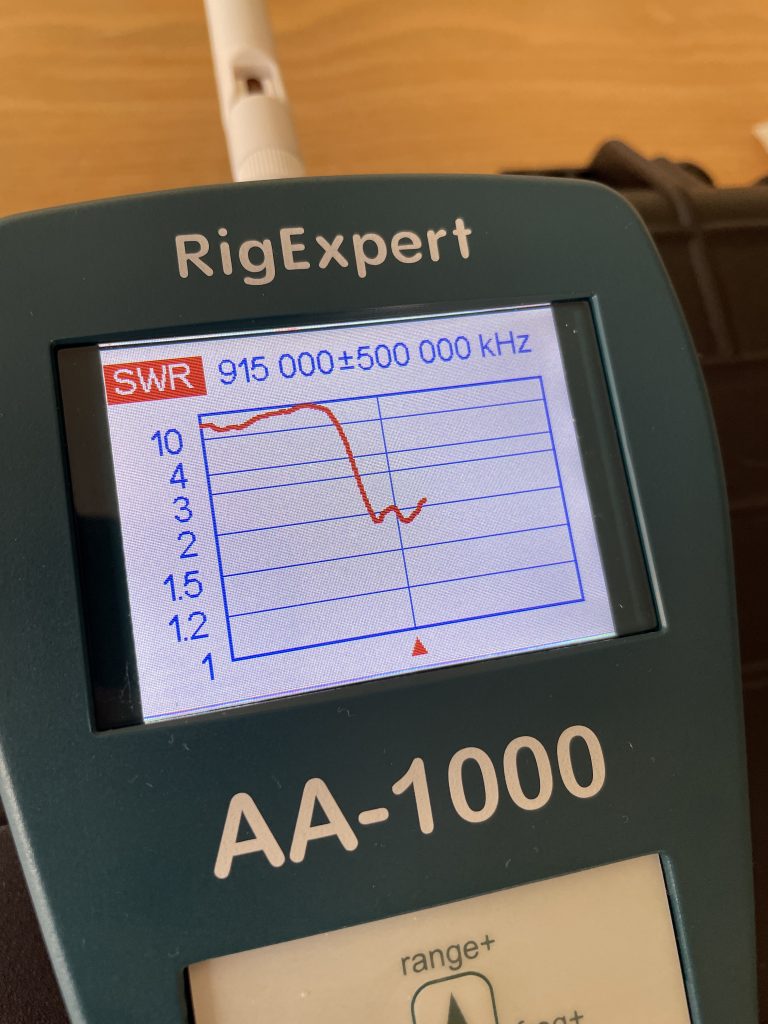
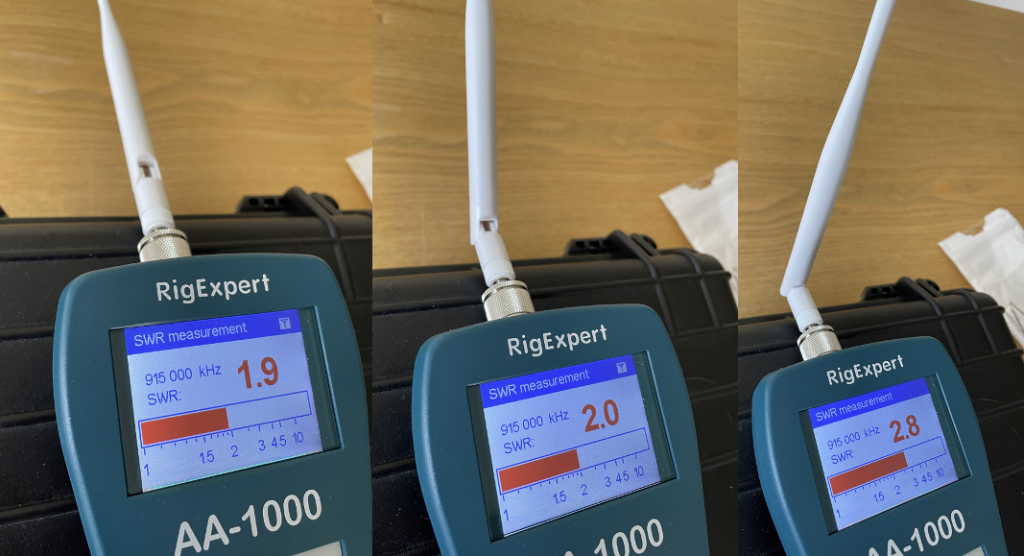
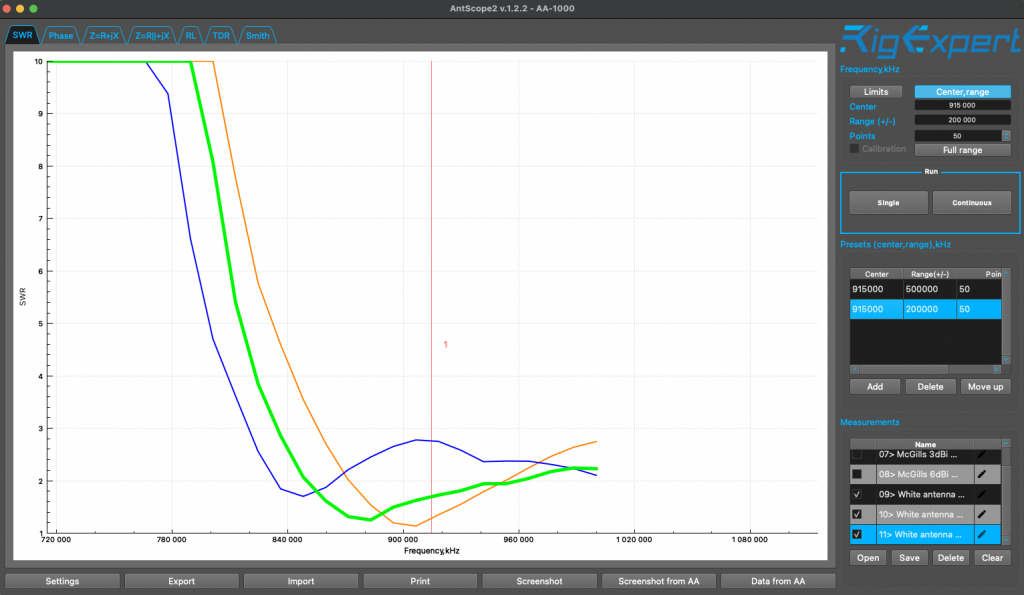
RAK 5.8dbi

Best SWR: 1.13
Comments: Pretty good. Very Low VSWR at 1.13. Still the pattern on the VSWR was not what I expected – closer to the stock Heltec one with the multiple dips which may suggest the antenna is tuned for multiple frequencies.
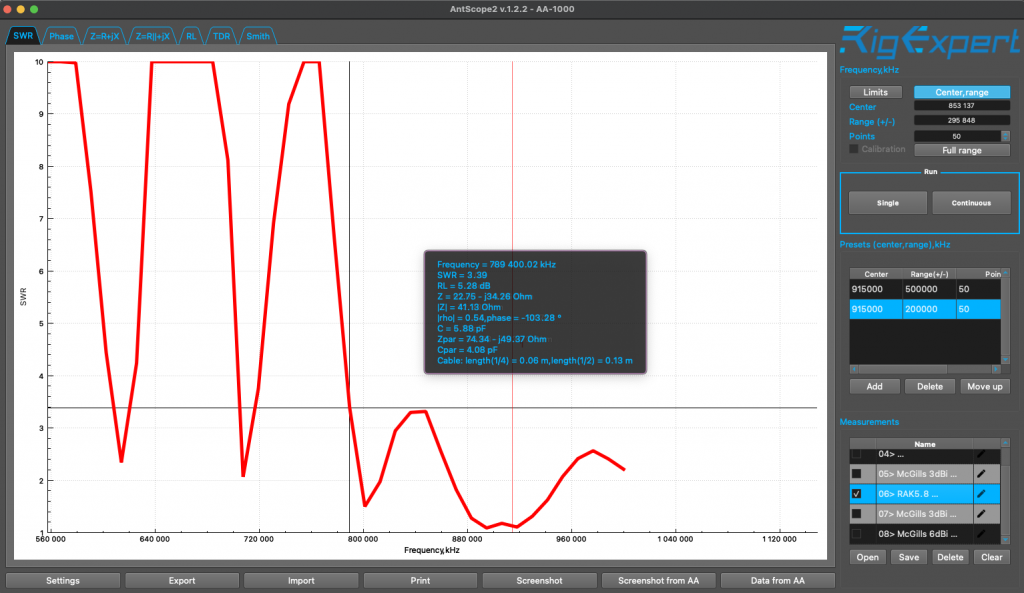
McGills 3dBi
Best SWR: 1.17
Comments: What’s going on here? I have no idea… I expected the V to be ‘pointier’ or narrower… Update! It’s a broadband antenna – take a look at Update #1 below.
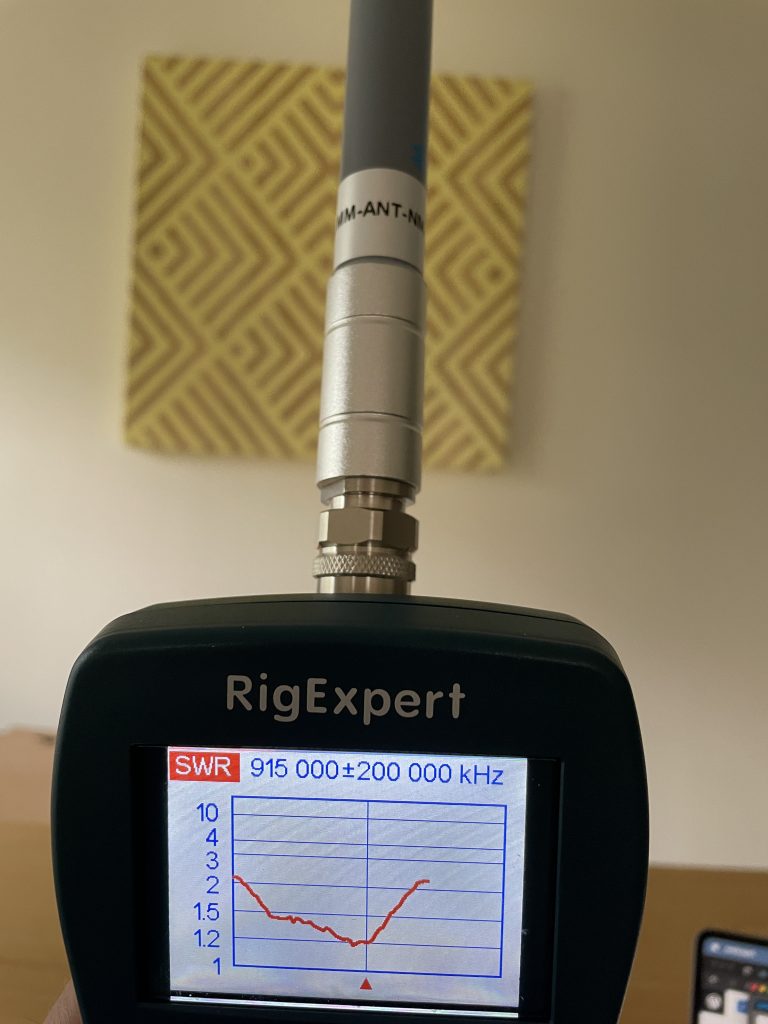
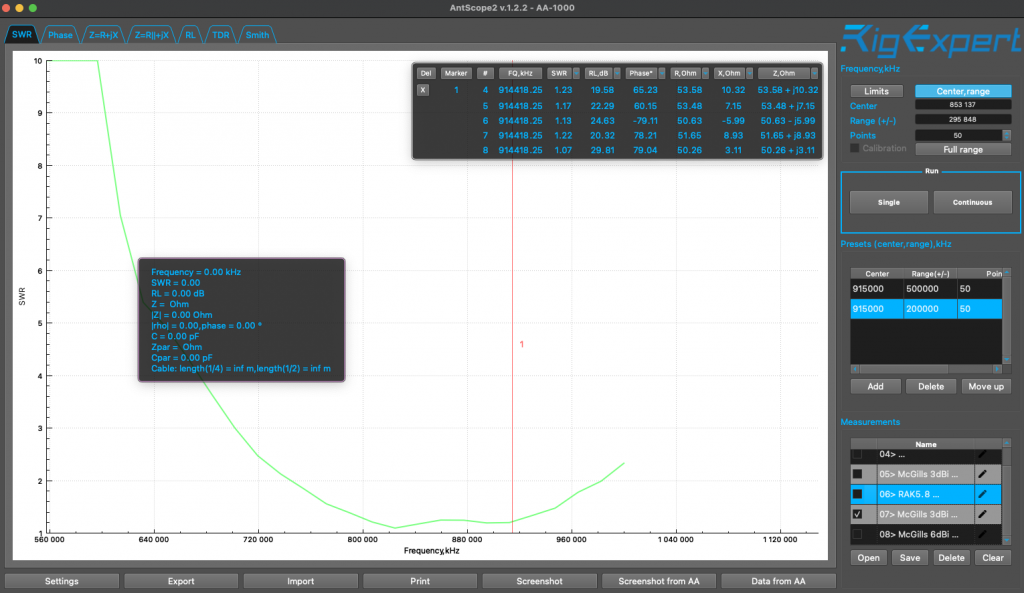
McGills 6dBi
Best SWR: 1.02
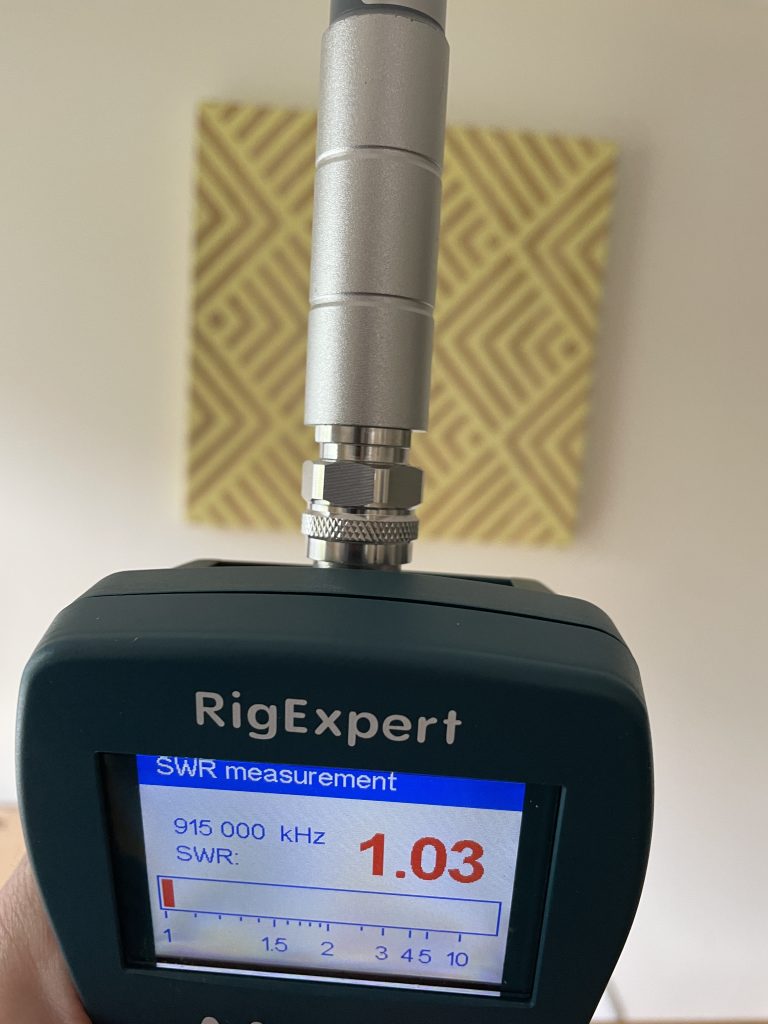
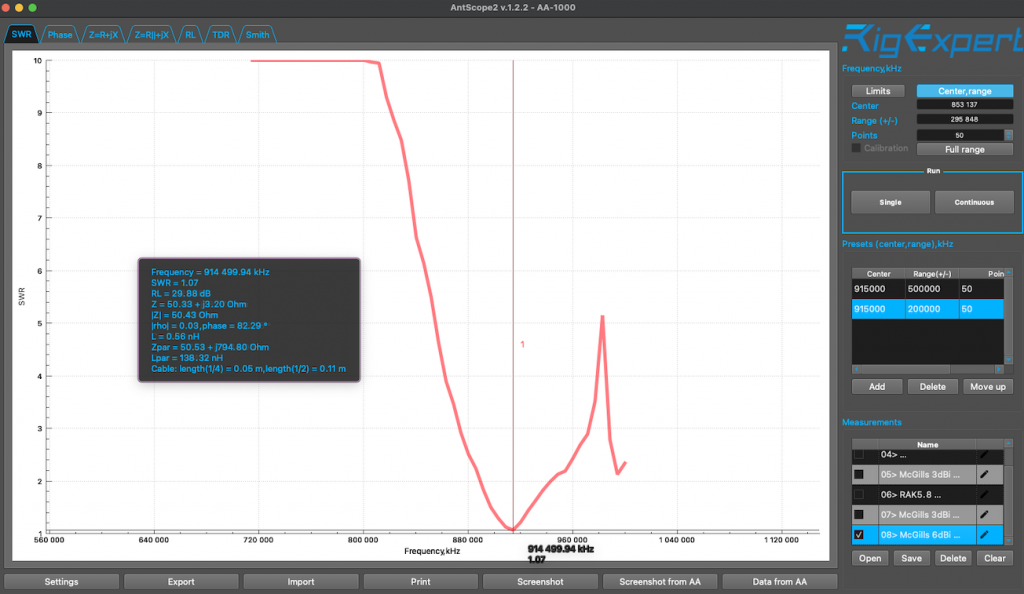
Comments: This one looks bang on. The lowest VSWR at 1.02. The lowest part of the V hits at 914.449Mhz – nearly perfect for AU915.
What (do I think) I have learned/confirmed?
- Antennas vary widely
- The Heltec antenna seems weird
- With Sensecap-style antennas, operating them straight out (or at 45 degrees) is better than the 90 degree detent position for VSWR. It also impacts the tuning. Stand your Sensecap on it’s face and point the antenna straight up – anything but 90 degree bend, which is universally bad
- RAKs are good
- McGills are better still – The 6dBi is significantly better. Almost perfect tuning and *almost* 1:1 SWR (1.02)
- I don’t know what’s going on with the McGills 3dBi one…is it broken? UPDATE: No it isn’t – it’s just got broadband tuning. See the update below
Now we need to see how this translates to rewards!
Now I need some feedback from you!
What does this all mean to you? What are you seeing in these charts/data? I’ve saved some of the images and the data files if anyone would like them, let me know.
Update #1: The story with the McGills 3dBi antenna – TL;DR it’s a broadband antenna
Here’s a fantastic comment from Umit who took the time to post a reply on the Helium (HNT) Australia – Early Adopters FB group:
Hello there, Great work on your tests. I have a background in RF communications, and I just wanted to help you interpret some of the tests you performed in your article at https://www.heliumact.com.au/…/helium-antennae…/ With the 3dbi McGill’s antenna, the frequency response is actually broadband. What that basically means, right, is that McGill’s can market the 3dBi antenna to Australia, the U.S., South America and the European markets, as the VSWR is still at acceptable ranges for all those markets (hence frequencies of operation, at 915MHz, 915MHz, 923MHz and 868MHz). For instance though, some areas in Europe use 433MHz for LoRa, and none of the antennas you tested would be suitable for those markets. However, you can see, that by design it is possible to design an antenna that has a low enough VSWR across a frequency range in order to use that antenna for a board frequency band (i.e. “broadband”). So, to reiterate, the 3dBi is not weird, it just means that the antenna is designed (either intentionally or incidentally) to be able to operate over an operational frequency of about 800MHz to 925MHz where the VSWR is below 1.4, still fairly good considering it gives you a frequency range of over 100MHz. Hope that helps.
Umit – Helium (HNT) Australia – Early Adopters | We did some testing of different Helium antennas | Facebook
So there you go! Cheers, Umit! Super helpful. 🙂
Update #2: More testing done at Dirty Optics
Our friends at Dirty Optics in WA have also done some Helium antenna bench-testing if you need a little more data to help with your buying decisions. Be sure to check out their post this week, too.
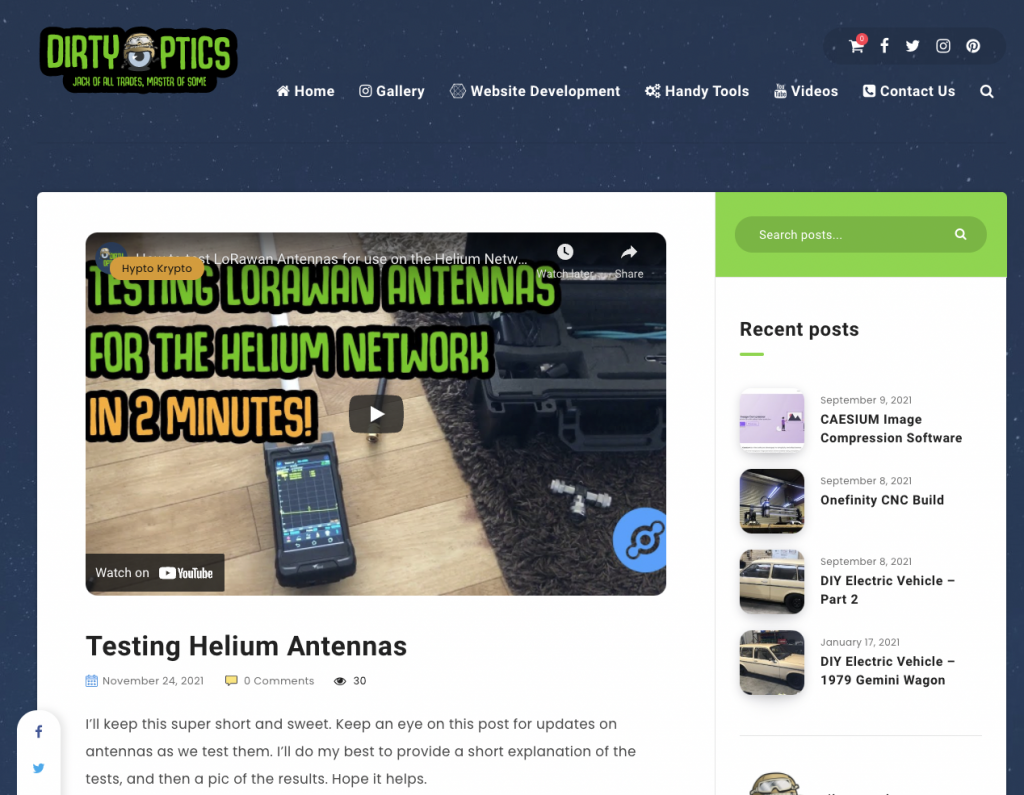
UPDATE #3 More antennas tested along with flat window/door cables and more
We have another post when you’re done here documenting the performance of a handful of new contenders – McGill 3dBi, Elsema 4dBi and the new RFshop 6dBi, as well as some test results of a complete installation with CLF195 cable and the popular flat window/door pass-through cables.




